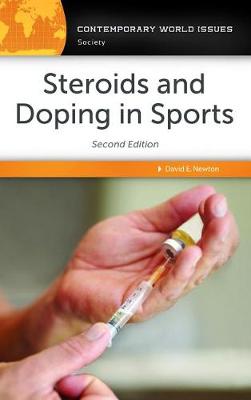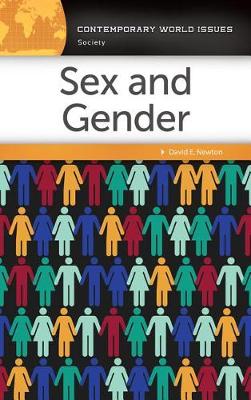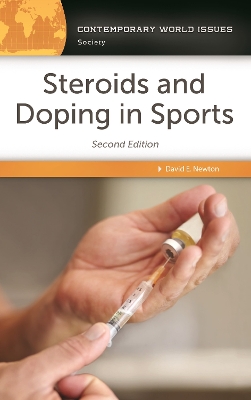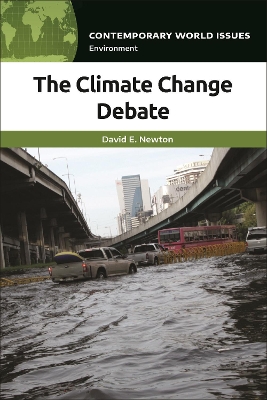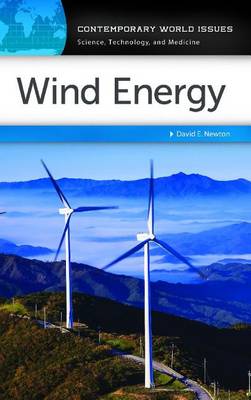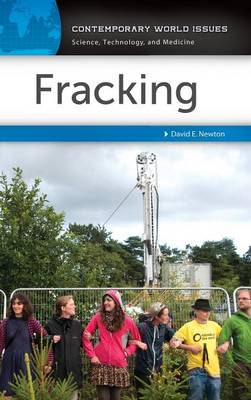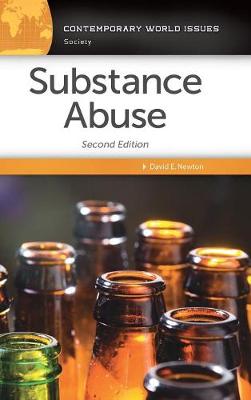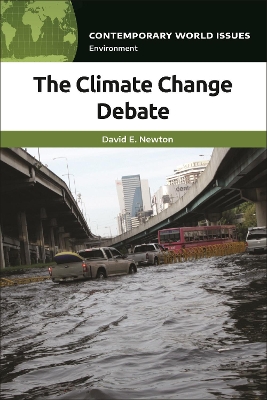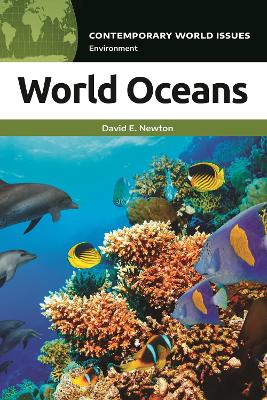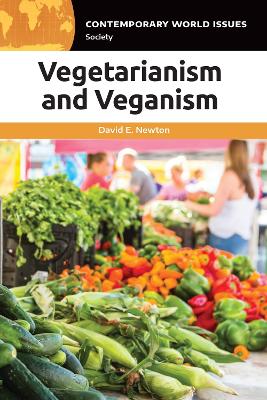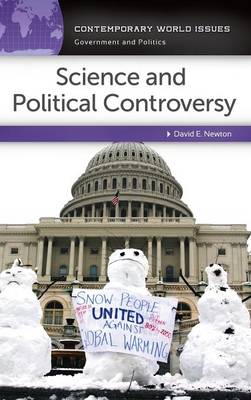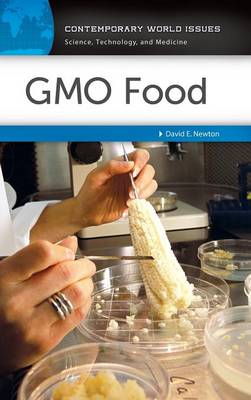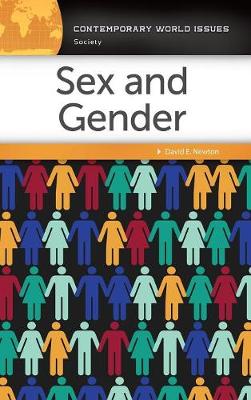Contemporary World Issues
46 total works
Steroids and Doping in Sports: A Reference Handbook, 2nd Edition
by David E Newton
This book provides a comprehensive introduction to one of the most controversial issues in modern society-steroid abuse among athletes-as well as to the ongoing debate over the use and misuse of illegal substances in amateur and professional sporting events.
Now in its second edition, this book provides readers, with updated critical and objective information about steroids and doping in sports. The first two chapters deal with the history and background of steroids and doping in sports in addition to current problems, controversies, and possible solutions. Additionally, they provide readers with the background to understand the nature of the problems involving steroid use and doping in sports in the United States and worldwide.
New to this edition is the Perspectives chapter. Composed of diverse voices, this chapter allows readers to gain insight from scholars, athletes, journalists, and others who have a stake in the issues. Remaining chapters provide a variety of research tools, such as primary documents and biographical profiles, for readers to use in continuing their research. Other resources include a chronology, a glossary, and an extensive annotated bibliography.
- Helps readers towards an understanding of the nature of anabolic steroids and their effects on the human body, both beneficial and harmful
- Comprises an extensive array of tools that permits students to continue their own research on the topic
- Includes a glossary of terms that will aid readers in better understanding the technical language used in discussions of steroids and doping in sports
- Introduces readers to the complex issue of testing for illegal drugs in both amateur and professional sports, and to methods of testing and problems involved with mediating the validity and reliability of tests
- Introduces students to important individuals and organizations involved in steroid abuse and doping in sports, both historically and currently
The history of cloning experiments dates back more than a century, but advances in technology in recent decades have multiplied the potential applications of cloning—and expanded the controversies surrounding these possibilities. Cloning: A Reference Handbook provides an accessible description of the development of plant and animal cloning from the early stages of human civilization to the present day and coherently covers the science and technology involved. It reviews the essential controversies that have arisen about cloning—particularly applications involving human DNA—as researchers have advanced and extended the tools for cloning organisms. Additionally, the book discusses public opinion about cloning and the legislative and administration actions that have been taken with regard to the practice.
This single-volume work provides a broad treatment of the subject, going back further in history than is the case with most texts, covering plant cloning and providing a thorough overview of the nature of animal cloning and related issues. Examples of the topics covered include the natural "cloning" processes of regeneration in plants and animals; crucial research breakthroughs on animal cloning by Robert Briggs and Thomas King, John Gurdon, Gail Martin, James Till and Earnest McCulloch, and others; and the laws that regulate which types of cloning are allowed and prohibited in the United States and in other countries.
The use of wind power for the generation of electricity holds vast potential for solving the world's energy problems, but numerous technical and social issues must be addressed before that potential can be realized. This handbook will both educate students about current issues related to wind energy and introduce the ways in which mankind has harnessed the wind through the ages. The book covers topics as diverse as early windmills in Europe, the United States, China, and the Middle East; the development of wind farms for electricity generation; and political factors involved in the development of wind energy today. Conventional wind turbine mechanics are explained, as are the technical improvements that drive modern wind turbines and other wind systems.
What makes the handbook unique is that it combines hard science with perspective pieces that address topics such as potential environmental damage that can result from modern wind technology, and how recent developments in wind turbine technology hold the promise for considerably reducing the cost of this alternate energy source, making it competitive with conventional fossil fuels. Readers will be engaged by extensive discussion of the economic, political, and ethical issues raised by the expanding use of wind energy in the United States and elsewhere, and they will be intrigued by a look at what wind power can mean to the planet's energy future.
Hydraulic fracturing of oil and gas wells—known commonly as "fracking"—has been in use in the United States for more than half a century. In recent years, however, massive expansion of shale gas fracturing across the nation has put fracking in the public eye. Is fracking a "win win" like its proponents say, or are there significant costs and dangers associated with the use of this energy production technology?
This book examines fracking from all angles, addressing the promise of the United States becoming energy independent through the use of the process to tap the massive amounts of natural gas and oil available as well as the host of problems associated with fracking—groundwater contamination and increased seismic activity, just to mention two—that raise questions about the long-term feasibility of the process as a source of natural gas.
The first part of the book provides a historical background of the topic; a review of technical information about fracking; and a detailed discussion of the social, economic, political, legal, and other aspects of the current fracking controversy. The second part of the book provides a host of resources for readers seeking to learn even more in-depth information about the topic, supplying a chronology, glossary, annotated bibliography, and profiles of important individuals and organizations. Written specifically for students and young adults, the content is accessible to readers with little or no previous knowledge regarding fracking.
From the pharmaceuticals advertised on television for various specific medical conditions; to alcohol, which is consumed regularly as a societal norm; to illicit drugs such as cocaine, heroin, and methamphetamine; to marijuana, which is becoming legal in an increasing number of U.S. states, drugs are all around us and are ingrained in our culture. The difficult reality is that any drug is a substance that can be abused. Substance Abuse: A Reference Handbook provides a detailed discussion of the history of substance abuse, covers the classification of drugs, explains how drugs work in the body, includes a general survey of both legal and illegal drugs, and describes the methods of substance abuse prevention and treatment. Readers receive a comprehensive introduction to the broad topic of substance abuse and a variety of additional resources with which to conduct extensive research.
In addition to describing the nature of licit and illicit drugs, the beneficial and harmful effects drugs can have on the human body, and factors that may lead to abuse and/or substance abuse, this book covers subtopics such as drug testing in a variety of settings including the workplace and sports, drug control mechanisms, and the debates relating to the legalization of drugs such as medical and recreational marijuana. The book also offers primary source resources that enable readers to directly examine the text of documents, such as significant laws and court cases dealing with aspects of substance abuse, alcohol prohibition amendments, the Controlled Substances Act of 1970, a series of memoranda from the U.S. Department of Justice regarding the prosecution of marijuana cases, and state doctor shopping laws.
The Climate Change Debate: A Reference Handbook provides an in-depth look at climate change facts and statistics. It also discusses debate surrounding the scientific consensus.
The Climate Change Debate: A Reference Handbook covers the topic of climate change from the earliest days of planet Earth to the present day.
Chapters One and Two provide a historical background of climate change and a review of current problems, controversies, and solutions. The remainder of the book consists of chapters that aid readers in continuing their own research on the topic, such as an extended annotated bibliography, chronology, glossary, noteworthy individuals and organizations in the field, and important data and documents.
The variety of resources provided, such as further reading, perspective essays about climate change, a historical timeline, and useful terms in the climate change discourse, differentiates this book from others in the field. The book is intended for readers of high school through the community college level, along with adult readers who may be interested in the topic.
Waste Management: A Reference Handbook provides an in-depth look at the waste management industry in the United States and elsewhere, including such issues as food scraps, recycling, and other kinds of solid waste.
Waste Management: A Reference Handbook covers the topic of waste management from the earliest pages of human history to the present day.
Chapters One and Two provide a historical background of the topic and a review of current problems, controversies, and solutions. The remainder of the book consists of chapters that aid readers in continuing their research on the topic, such as an extended annotated bibliography, a chronology, a glossary, lists of noteworthy individuals and organizations in the field, and important data and documents.
The variety of resources provided, such as further reading, perspective essays about waste management, a historical timeline, and useful terms in the industry, differentiates this book from others in the field. It is intended for readers of high school through the community college level, along with adult readers who may be interested in the topic.
- Provides readers with a history of waste management, which has evolved significantly over the years
- Discusses the impact of global economics and trade on the waste management industry
- Supplies abundant resources for further research on waste management by readers of all ages
- Rounds out the author's expertise in perspective essays, giving readers a diversity of viewpoints on the topic
World Oceans: A Reference Handbook opens with an overview of the history of human knowledge and understanding of the oceans and cryosphere, along with related scientific, technological, social, political, and other factors. The second chapter presents and discusses about a dozen major problems facing the Earth's oceans today, along with possible solutions. The third chapter provides interested individuals with an opportunity to express their thoughts and ideas on today's ocean issues, and remaining chapters provide additional resources, such as a bibliography, a chronology, and a glossary, to assist the reader in her or his further study of the issue.
Where most books for young adults learning about world oceans take a purely expository treatment, this book provides readers with additional information as well as resources, allowing them to learn more and inform further study of the subject.
* Includes a chronology of significant developments in the gay rights movement and biographical sketches of important and influential people
* Selected print and nonprint resource listings direct readers to additional information
Same-sex marriage continues to be a polarizing subject in the United States and other parts of the world. This new edition of Same-Sex Marriage: A Reference Handbook brings readers up to date on the status of same-sex unions from social, legal, political, and historical perspectives.
According to Pew Research poll data, in 2001, the majority of Americans opposed same-sex marriage-57 percent against, 35 percent in support. As of 2015, a majority of Americans (55 percent) supported same-sex marriage, with 39 percent expressing opposition. The landmark Obergefell v. Hodges case, in which the U.S. Supreme Court held in a 5-4 decision that the fundamental right to marry is guaranteed to same-sex couples, is likely further influencing opinions among U.S. citizens. Still, controversy and heated debate continues to ensue on the social, legal, and political implications of same-sex marriage.
The second edition of Same-Sex Marriage: A Reference Handbook presents thorough coverage of recent changes in the legal status of same-sex marriage in the United States as well as essays that provide historical perspectives on same-sex marriage; an extensive, up-to-date bibliography; a collection of primary source documents; a glossary; and a chronology that will serve readers studying the topic. New material includes a detailed discussion of the 2015 Supreme Court of the United States decision as well as coverage of issues that have arisen as a result of the Obergefell case, such as the debate over "religious freedom" and LGBT civil rights legislation.
Vegetarianism and Veganism: A Reference Handbook provides a history and background of vegetarianism and veganism from prehistorical times to the present day, along with detailed discussions of the practice in each historical period since that time. The ancillary chapters provide additional information on important individuals and organizations in the field, relevant data and documents on the topic, an annotated bibliography, a chronology of important events, and a glossary of terms likely to be encountered in the field. Of special interest is the Perspectives chapter, in which stakeholders in the topic write about some specific aspect of its importance in their own lives.
Intended for high school, college, an general readers, the volume covers the field of vegetarianism and veganism in cultures from around the world. Some specific topics include ancient views of vegetarianism, religious stands on the practice, the growth of vegetarian and vegan institutions, and current controversies over the practice of meat-free diets. It also includes a host of resources that readers can use to continue their own research in the field.
This intriguing volume gives readers a thorough understanding of all sides of the ozone debate.
A shrewd and compelling examination of how political figures throughout history have used scientific findings to achieve their objectives-just as scientists have often put political forces to work to achieve their own goals.
The U.S. government has historically been the engine of American scientific achievement, from the birth of nuclear technology to the "space race." However, at times, our government has also misrepresented scientific evidence to advance a political agenda. Science and Political Controversy: A Reference Handbook examines how the government has facilitated research for the public good and the ways in which politicians have manipulated data to serve political ends around a broad array of controversies, from stem cell research to energy development, chemical health risks, and climate change.
Written specifically for high school students and general readers without specialized background knowledge on the subject, the work presents perspective essays authored by representatives from governmental agencies, politicians, political scientists, experts in the physical and life sciences, and other stakeholders concerned with the intersection of politics and science. The first section of the book provides background information on the topic that overviews the current problems and issues related to the interaction of science and politics. The second section supplies resources that readers can use for their own research, such as an annotated bibliography, profiles of important individuals and organizations, a chronology of important events, and a glossary of key terms.
- Supplies a detailed review of the past decade during which politicians have misused and misrepresented scientific knowledge
- Describes events going back to ancient Greece during which use or misuse of scientific or political power occurred, underscoring how these behaviors are well-established "means to an end"
- Includes biographical sketches of individuals who have been involved in such activities
How is water scarcity becoming a serious problem worldwide-including in the United States? This book provides a broad overview of water, sanitation, and hygiene problems faced by both developing and developed nations around the globe and suggests how these problems can be solved by imaginative and innovative thinking.
Human society depends on sufficient clean water. In many parts of the world, however, this most basic commodity is in very short supply. Even in developed, first-world nations, climate change and other factors have begun to create alarming water supply issues. The Global Water Crisis: A Reference Handbook provides a detailed overview of this important topic, enabling readers to understand the nature of the world's water, sanitation, and hygiene (WASH) problems and to know what resources are best for conducting their own research on the topic.
The first chapter of the book provides the historical background information pertaining to the world's water and sanitation problems; the second chapter documents the problems, explores the issues, and presents potential solutions for understanding the nature of WASH issues. The other sections provide the needed resources for readers to study the issue of the global water crisis further: perspective essays, primary documents, biographical profiles, data and documents, an extended annotated bibliography, a chronology, and a glossary.
- Provides readers with an understanding of the severity of the water scarcity in the world today
- Explains the nature of various sanitation issues around the world, how they arise, the problems for which they are responsible, and some possible solutions
- Outlines the reasons that droughts are becoming a more serious problem in many parts of the world and what can be done to deal with these water shortages
- Highlights the new, specialized problems concerning water supply raised by climate change
Genetic engineering has long been used to impart desirable characteristics to food plants in order to improve crop yield, pest resistance, and herbicide tolerance. Genetic modification of foods, however, has created a storm of controversy everywhere in the world—including the United States. What are the benefits of and risks involved with genetically modified organisms (GMO) and crops? What powerful industry pressures have extended the sale and use of GMO foods and crops globally? And how should consumer food products that involve GM ingredients be labeled? GMO Food: A Reference Handbook addresses these questions and the complex issues involved, allowing readers to fully understand why genetically modified organisms represent one of the most important issues in the 21st century.
The book provides clear, factual information and background on the history of genetically modified crops and foods, covering topics such as the historic methods of plant and animal modification (such as cross-breeding) and important discoveries in genetics, biochemistry, molecular biology, genetic engineering, and related fields; the social, political, philosophical, and economic issues that have arisen with these scientific advances; and the laws and regulations that have resulted from the range of attitudes about GMO foods. The book also supplies additional resources for readers performing extensive research in an annotated bibliography of books, articles, reports, and web pages.
Geared toward high school students, undergraduate students, and general readers, this reference work provides a thorough and unbiased treatment of sex, gender, and transgenderism—social issues of particular importance in today's world.
Sex and Gender: A Reference Handbook is a single-volume book that introduces a variety of personal, social, political, and ethical issues of concern to every young adult in the United States today. Written in a style that is accessible and engaging for student readers and researchers, this book examines subjects that are rarely discussed for readers of this age group, providing authoritative information on topics such as gender roles, gender development, and gender inequality; body image; sexual differentiation in humans; the range of human affectional expression; sex education; and LGBT discrimination.
Readers of this reference book will examine a number of important current issues relating to sex and gender, such as transgenderism, gender dysphoria, same-sex attraction, the development of gender roles, the changing perspectives on these topics, and other controversial and unresolved issues in American society today. The book also includes a Data and Documents chapter that contains laws, courts cases, and other primary documents that relate to current issues involving sex and gender.
